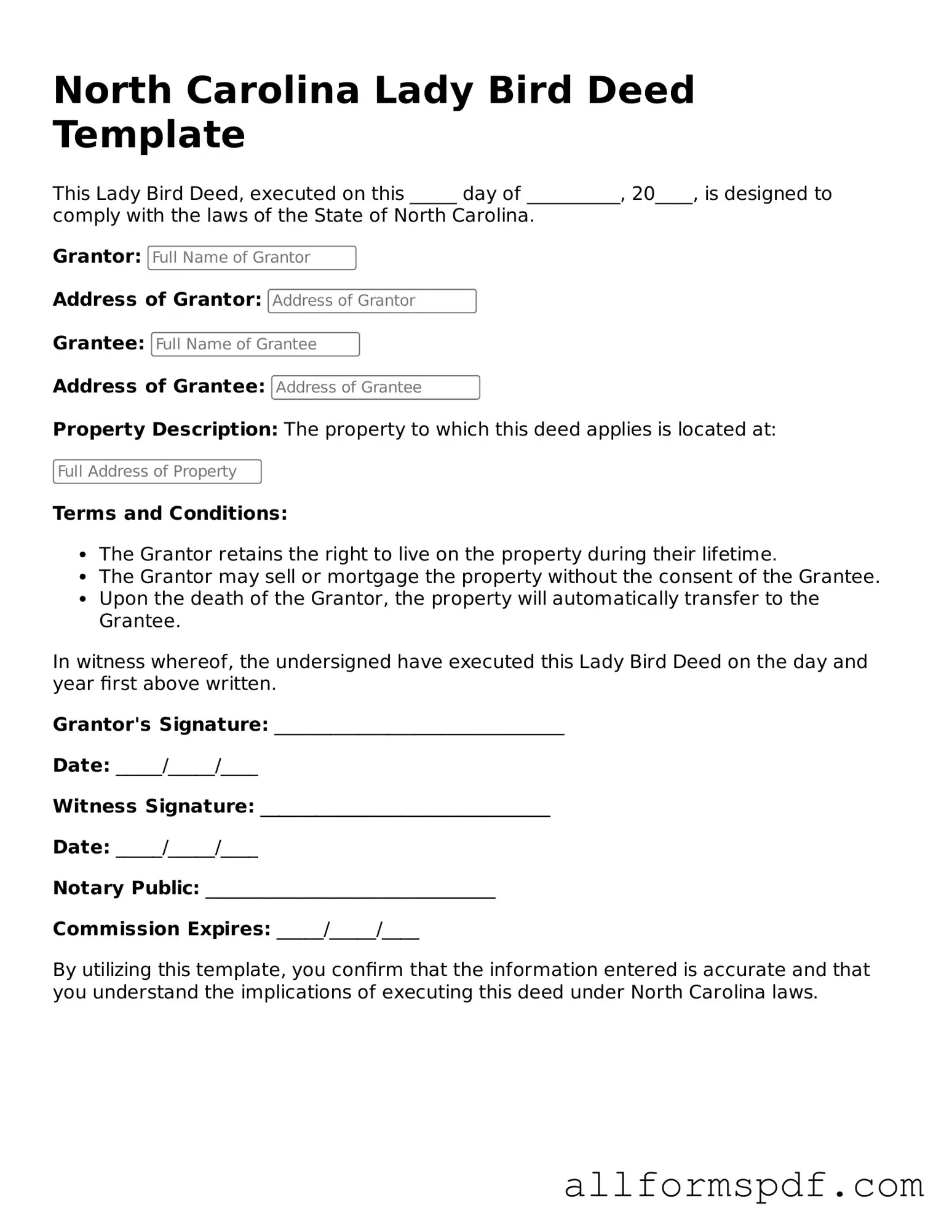Filling out the North Carolina Lady Bird Deed form can be straightforward, but many individuals make common mistakes that can lead to complications. One frequent error is failing to provide accurate legal descriptions of the property. This description must be precise and often requires information from the property deed. Omitting or misrepresenting this information can cause issues in the future.
Another mistake involves not including all necessary parties. The form requires the names of both the grantor and the grantee. If either party is missing, the deed may not be valid. Additionally, individuals sometimes forget to sign the document. A signature is essential for the deed to be legally binding.
Many people overlook the importance of having the deed notarized. A Lady Bird Deed must be notarized to ensure its authenticity. Without a notary’s signature and seal, the deed may not hold up in court. Some individuals also neglect to record the deed with the county register of deeds, which is crucial for public notice and protection of the property rights.
Errors can also arise from misunderstanding the implications of the deed. The Lady Bird Deed allows for the transfer of property while retaining certain rights. Failing to understand these rights can lead to unintended consequences regarding property use and transfer upon death.
Another common mistake is not consulting with a legal professional. While it is possible to fill out the form independently, seeking legal advice can help clarify any uncertainties. This can prevent costly errors that may arise from misinterpretation of the form's requirements.
People sometimes use outdated versions of the form. Laws and requirements can change, so it is vital to ensure that the most current version of the Lady Bird Deed is being used. Using an outdated form may result in noncompliance with current regulations.
Lastly, individuals may not take the time to review the completed form thoroughly. Simple typographical errors or omissions can invalidate the deed. It is advisable to double-check all entries before submission.
